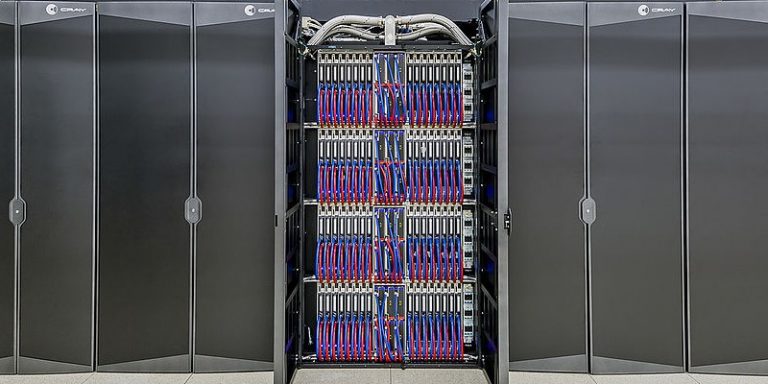
With the help of Hewlett Packard Enterprise (HPE) and Nvidia, the Swiss Centre for Scientific Computing (CSCS) is developing the Alps supercomputer. This new tool, equipped with artificial intelligence, aims to be the most powerful in the world in this field. It will replace Piz Daint, the current CSCS supercomputer.
An architecture made possible by the collaboration between HPE and Nvidia
Alps will be built by HPE and will be able to process information from large amounts of complex data with great efficiency. The supercomputer will be equipped with the HPE Cray software environment, which will promote a “software defined” approach to supercomputing. Nvidia will provide components and platforms such as the NVIDIA ARM Grace processor, the NVIDIA HGX software platform and the NVIDIA HPC SDK.
Through the existing collaboration between these two technology companies, Alps is expected to be able to train GPT-3, a popular NLP model, in just two days, seven times faster on Nvidia’s 2.8 AI-exaflops Selene supercomputer.
Thomas Schulthess, physicist at ETH Zurich and director of CSCS, commented on the architecture of this future supercomputer:
“Alps will use the HPE Cray EX supercomputing infrastructure which has
cloud-native software architecture and allows for the implementation of a software-defined research infrastructure as well as Nvidia’s new Grace processor, allowing, through the coupling of traditional AI and supercomputing technologies, to obtain a unique infrastructure.”
Antonio Neri, CEO of Hewlett Packard Enterprise, reflects on this three-way collaboration:
“HPE has been collaborating with CSCS for many years in the area of high performance computing technologies to be able to significantly accelerate certain areas of scientific research. We are honored to be able to continue our collaboration with CSCS by having designed this new supercomputer that will help CSCS in its missions. Equipped with this incredible tool, CSCS will be able to explore new perspectives from its data, enabling significant advances that will advance the world we live in. “
Objectives for using the Alps supercomputer
Scheduled to be commissioned in 2023, the Alps system will be versatile, open to the Swiss research community, but also to researchers from around the world. The tool will be able to be used for numerous studies and research projects in a wide variety of fields: climatology, meteorology, materials science, astrophysics, fluid mechanics, economic and social sciences, life sciences, molecular dynamics, quantum chemistry and particle physics.
Thomas Schulthess explains the use that will be made of this new supercomputer:
“We are not simply providing a new supercomputer. We are also using the opportunity to modernize and expand our computing center in several phases to turn it into a service-oriented research infrastructure, thus enabling significant advances in scientific research.”
Jensen Huang, Nvidia’s founder and CEO, elaborated on Nvidia’s contribution to the project while also discussing the prospects for the future:
“Today’s grand scientific challenges require a new kind of supercomputer to
discovery. […] By leveraging our new Grace processor designed for large-scale HPC and AI, CSCS joins NVIDIA in blazing a new trail: building a world-class ARM-based supercomputer infrastructure that will enable the world’s leading scientists to harness the power of AI to do world-changing research.”
Translated from Suisse : le centre de calcul scientifique va se doter du supercalculateur Alps









